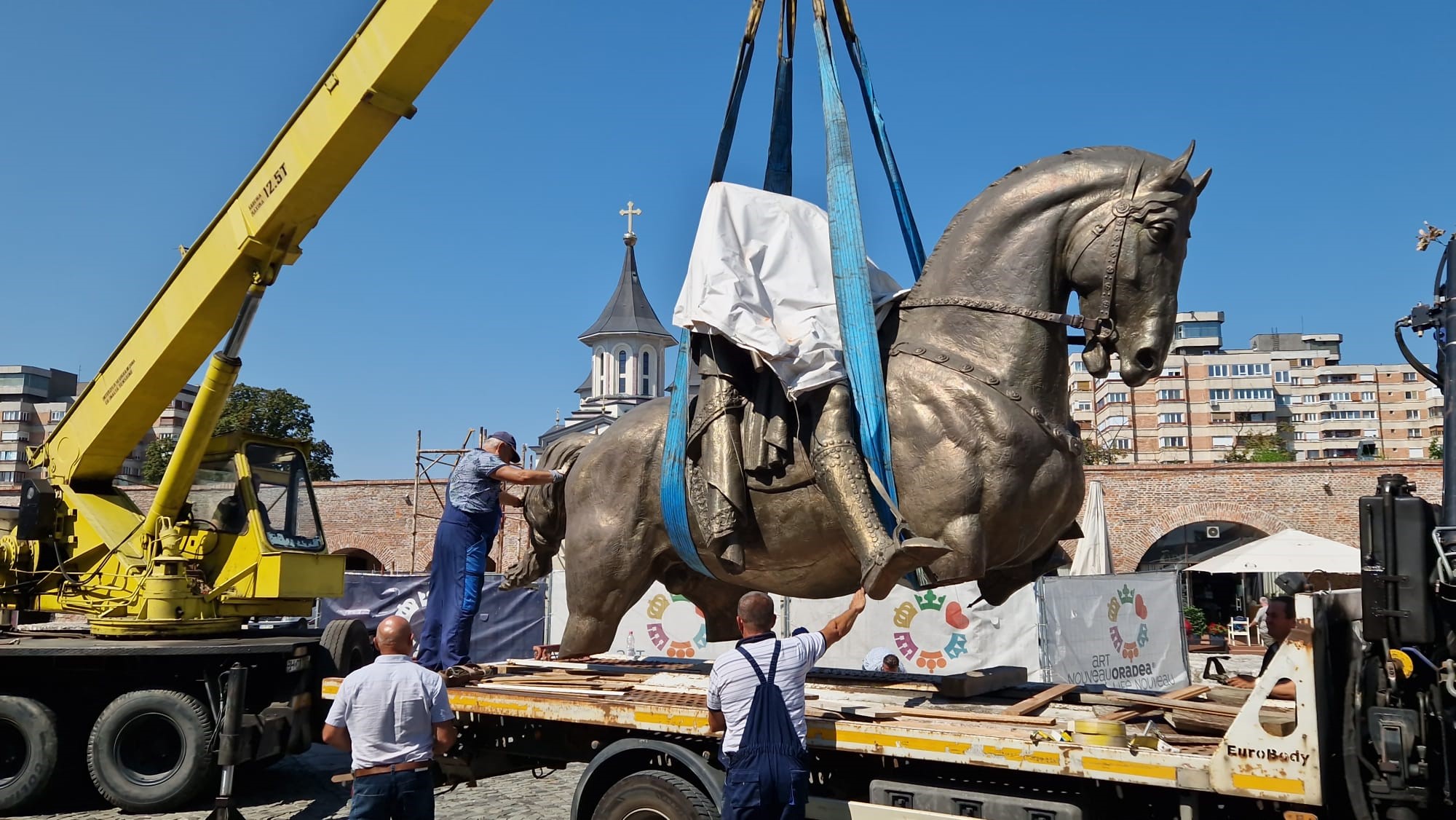
The equestrian statue will be placed on the previously prepared pedestal in about two weeks.Continue reading
The bronze statue of Saint King Ladislaus, the work of sculptor Árpád Deák, has been placed on its pedestal in the Castle of Oradea (Nagyvárad in historic Hungary, modern day Romania), where it is now open to the public, the Roman Catholic Diocese of Oradea announced on Tuesday.
According to a post on the diocesan social media page, representatives of Ronde Bosse Art Ltd. completed the assembly of the sculpture on Monday and placed it on the pedestal. On Tuesday, representatives of the municipality and the diocese – Florin Birta, Mayor of Oradea, and László Böcskei, Roman Catholic bishop of Oradea – laid a wreath at the statue to honor the memory of St. Ladislaus.

Photo: Facebook/Primăria Oradea
The new monument has now become part of the city’s tourist circuit, the diocese announced, adding that the blessing of the statue will take place at a later date during a ceremony.

Photo: Facebook/RMDSZ Bihar Megye
Romanian news portal eBihoreanul attributed the “discreet inauguration” of the statue, which took place without any press coverage, to the fact that
the statue’s installation became a target of nationalist manipulation last week, spread on social media by the Alliance for the Unification of Romanians (AUR).
The news portal recalled that in a response video published on Saturday, the mayor’s office “put an end to AUR’s slant” and informed Internet users that the statue of St. Ladislaus will be placed in the castle and not in the place of the statue of Michael the Brave, Voivode of Wallachia, celebrated for the unification of Romanian-inhabited territories, dismantled in 2019, and placed elsewhere after its restoration.
The equestrian statue of the Knight-King, venerated as the founder of the most important city of the Partium region, was erected thanks to the collaboration between the Roman Catholic diocese and the municipality. The plans for it were presented last February by Bishop László Böcskei and Mayor Florin Birta.
At the time,
Birta said the statue was a “historical reparation” to the city’s founding king and underscored the multiethnic and multicultural character of Oradea. Bishop Böcskei added that they also wanted to emphasize the role of the castle in the thousand-year history of the diocese.
The bronze casting of the 5.3 meter high equestrian statue was made by Ovidiu Petroman in Zimandu Nou (Zimándújfalu in historic Hungary, today in Romania). Its completion was supported by the Hungarian government and the Hungarians of Oradea, with several fundraising programs.

Photo: Facebook/RMDSZ Bihar Megye
The statue, erected between the Truncated Bastion and the Prince’s Palace, depicts the Knight-King on horseback, with a crown on his head and a battle axe in his hand. Árpád Deák had previously said that he had tried to create a classical, majestic, spiritualized figure of Saint Ladislaus.
Originally, the Hungarians of Oradea wanted the statue to be placed in the town’s main square, formerly St. Ladislaus Square, and a collection of signatures was initiated, but
former mayor Ilie Bolojan rejected the petition, supported by 8,000 signatures, and placed the statue of Romanian King Ferdinand in the square.
Hence, the choice fell on the castle that was restored with European funds. It was here that Saint Ladislaus had the first cathedral of Oradea built, serving as the burial place of the Knight-King and became a place of pilgrimage; later, several Hungarian monarchs were buried here.
The Hungarian king is the one with a real connection to Oradea. The Romanian King Ferdinand only visited the city with a then overwhelming Hungarian majority population on May 23, 1919 for the first time, to signal to the Entante Romania’s claim to the occupied Partium region.
Michael the Brave, Prince of Wallachia, was never in the city.
Via Ungarn Heute. Featured Image: Facebook/Nagyváradi Római Katolikus Egyházmegye